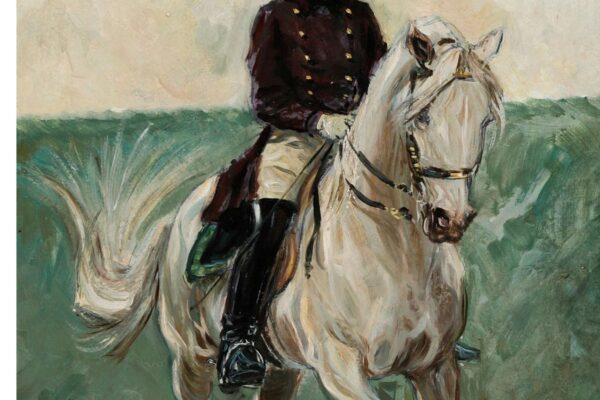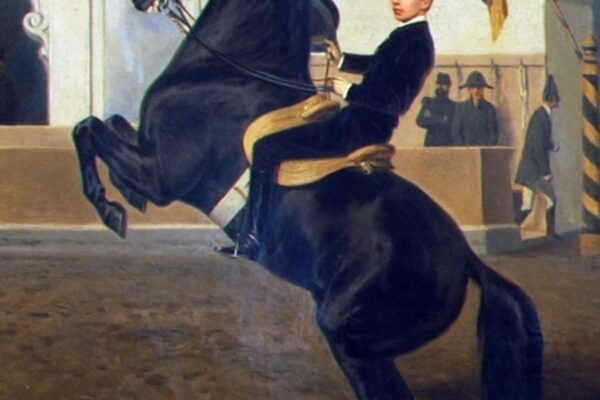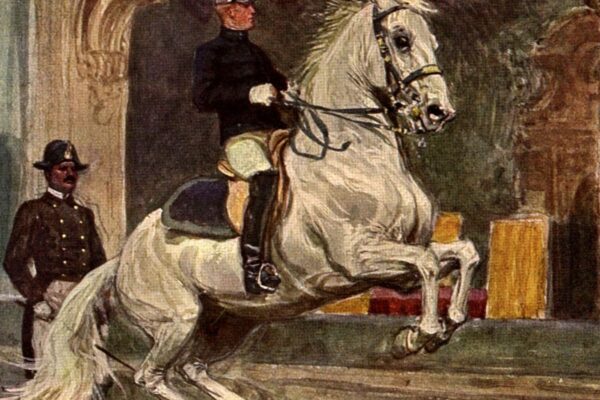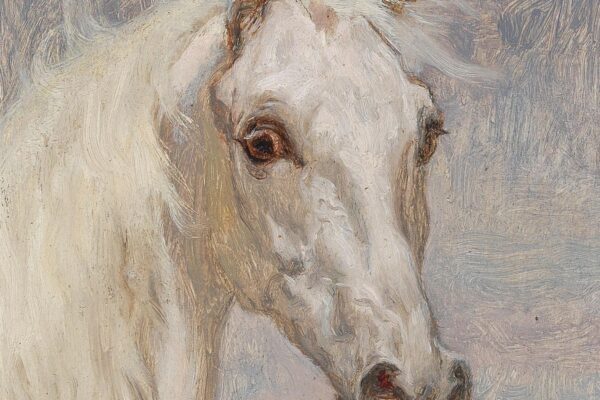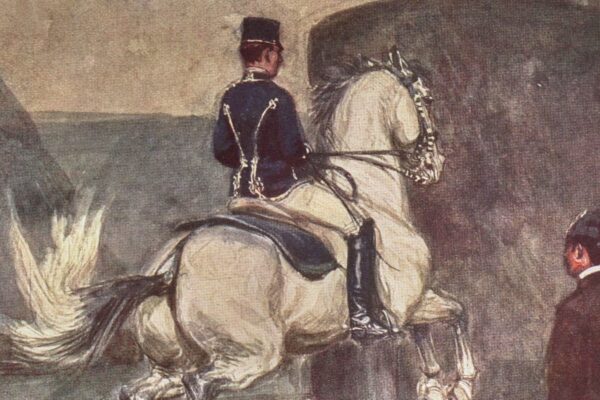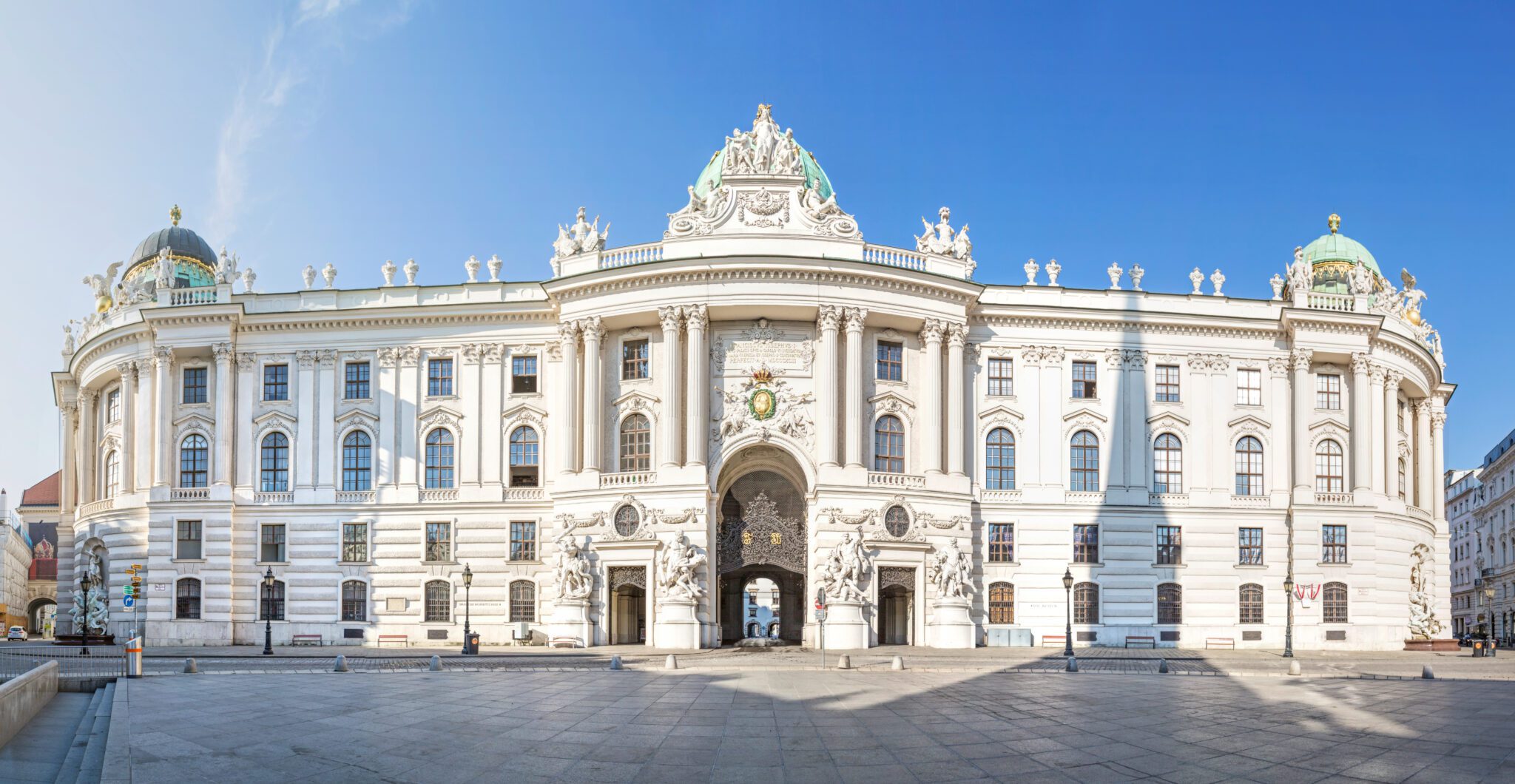
This post contains affiliate links, including links from the Amazon Associates programs. These links will direct you to products I recommend for further exploration and enjoyment of the topics I cover on my website and in my lectures. See more in the Privacy Policy below.
A Timeless Tradition in the Heart of Vienna
In Vienna, life moves to the stately 1-2-3 beat of the waltz. Even the horses waltz in Vienna, and they have been doing so for much longer than the waltz itself has existed. The Spanish Riding School, a jewel in Vienna’s cultural crown, has been enchanting audiences for over 450 years with its elegant equestrian displays.
This venerable institution home to the world-famous Lipizzaner stallions represents the pinnacle of classical dressage and is a significant part of Austria’s cultural heritage. The Spanish Riding School is not just a tourist attraction; it’s a living testament to centuries of equestrian tradition and the enduring bond between humans and horses.
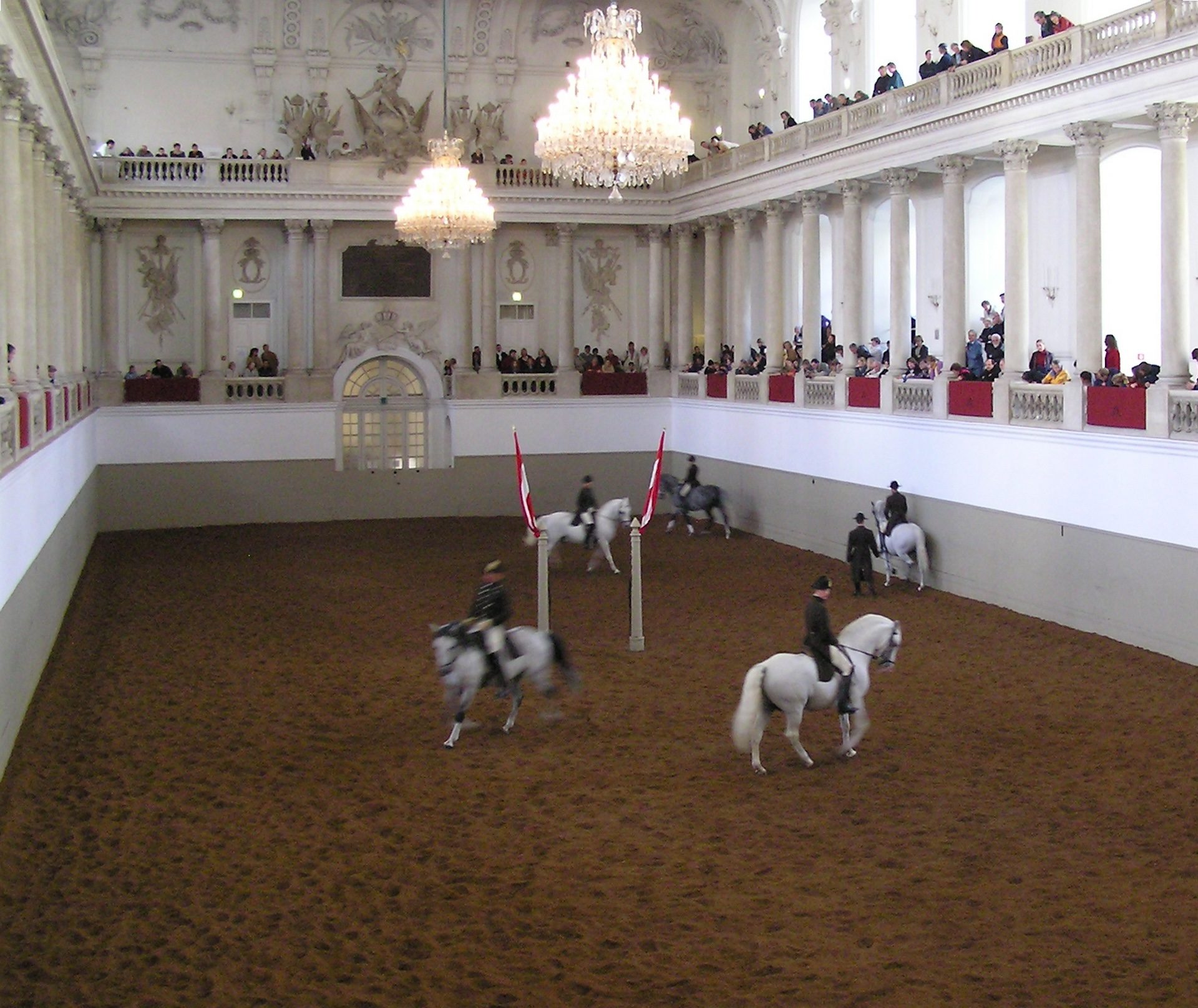
Photo Credit: Sparre via Wikimedia Commons
The Origins of the Spanish Riding School
The Spanish Riding School dates its foundation to 1572, making it the oldest riding academy in the world. Its name, however, doesn’t stem from Spain but from the Spanish horses that were the forerunners of the Lipizzaner breed. These horses, renowned for their strength, agility, and trainability, were brought to Austria from the Iberian Peninsula during the time of the Habsburg monarchy and used to train young aristocrats in the art of horsemanship.
The famous school’s home, the magnificent Baroque Winter Riding School in the Hofburg Palace, was built in 1729-35. Designed by the renowned baroque architect Joseph Emanuel Fischer von Erlach, this grand hall has witnessed not only countless equestrian performances but also significant historical events, including the negotiations between the citizens of Vienna and the Reichstag during the tumultuous year of 1848.
The Lipizzaner Stallions: The White Stars of Vienna
At the heart of the Spanish Riding School are the Lipizzaner stallions, often referred to as the “Dancing White Horses” of Vienna. These elegant horses are more than just performers; they are living symbols of European equestrian culture and a breed with a fascinating history.
Lipizzaners are born dark, usually black or bay, and gradually lighten to their characteristic grey-white coat over 6-10 years. This unique trait adds to their mystique and has contributed to their nickname, the “White Stars” of Vienna.
The breeding of Lipizzaners began in 1580 when Archduke Charles II established the imperial stud at Lipica (now in Slovenia), from which the breed takes its name. Today, the breeding takes place at the Piber Stud Farm in Styria, Austria, ensuring the continuation of this precious bloodline.
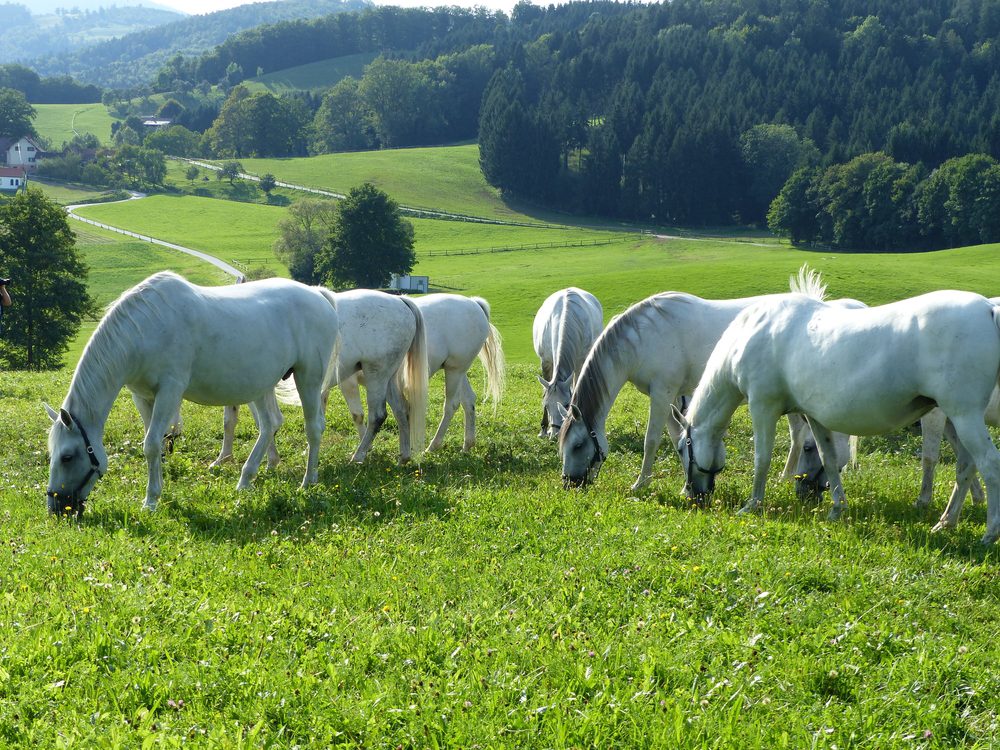
The Art of Classical Dressage: More Than Just Horse Dancing
The performances at the Spanish Riding School are far more than mere entertainment; they are displays of the highest levels of classical equitation. The roots of this art form can be traced back to ancient Greece, where the Athenian historian and horse enthusiast Xenophon (430-354 BCE) documented the principles of horsemanship in his work “The Art of Horsemanship.”
Initially developed for warfare, classical dressage evolved into an art form during the Renaissance. As heavy armor became obsolete, the focus shifted from power to grace and agility. The Spanish Riding School preserves and perpetuates this tradition, showcasing the Haute École or “High School” movements that are the pinnacle of classical dressage.
These movements, including the famous “airs above the ground,” are not just beautiful to watch; they show the extraordinary physical abilities of the horses and the deep connection between rider and mount. Movements like the levade, capriole, and courbette, once used in battle, are now performed as a testament to the horse’s strength, balance, and the rider’s skill, preserving the equestrian traditions of centuries.
Training the Dancers: From Young Stallion to Performing Artist
The journey for the young horses to performing artist at the Spanish Riding School is the result of years of training reflecting the school’s commitment to excellence and tradition. Training begins when the horses are about four years old and continues for 6-8 years before a stallion is ready to perform in public.
The training follows a carefully structured program that respects the physical and mental development of each horse. It begins with basic obedience and progresses through various stages, each building on the skills learned in the previous one. The ultimate goal is to develop a horse that is strong, supple, and responsive, capable of performing complex movements with apparent ease and grace.
Riders, too, undergo rigorous training. Becoming a fully qualified rider at the Spanish Riding School of Vienna can take up to 12 years. This lengthy apprenticeship ensures that the traditions and techniques of classical dressage are passed down accurately from one generation to the next.
The Performances: A Ballet of White Stallions
The public performances at the Spanish Riding School are a spectacle unlike any other. Often accompanied by classical Viennese music, these shows are frequently referred to as the “ballet of the white stallions.” The performances typically include various elements that showcase different aspects of the horses’ training and the riders’ skills.
The show usually begins with the “Young Stallions,” where horses in the earlier stages of their training show basic gaits and figures. “All Steps and Movements of the High School,” which includes the spectacular “airs above the ground.” The “Work in Hand” segment shows the horse’s obedience and the trainer’s skill in guiding the horse through complex movements from the ground.
One highlight is the “Pas de Deux,” where two riders and horses perform difficult movements in mirror image of each other. The show typically concludes with the “School Quadrille,” a choreographed performance by eight riders and horses, often described as a ballet on horseback.

Bellotto’s Colonel Königsfels teaching Prince Józef Poniatowski how to ride | Wikimedia Commons
Beyond the Performance: The Spanish Riding School’s Cultural Significance
Attending one of the performances of the famous snowy white Lipizzaner stallions is a highlight of any visit to Vienna. The Spanish Riding School is more than just a tourist attraction; it plays a crucial role in preserving an important piece of European culture. In 2015, the school’s classical horsemanship and high school of classical dressage were added to UNESCO’s list of Intangible Cultural Heritage of Humanity, recognizing its global significance.
The Spanish Riding School is actively involved in equine research and education. It collaborates with veterinary universities and other institutions to advance our understanding of horse physiology, behavior, and welfare.
A Dramatic History: The Wartime Rescue of the Lipizzaners
The history of the Spanish Riding School is not without its dramatic moments. Perhaps the most famous is the daring rescue of the Lipizzaner breeding stock during World War II, an event that highlights the international camaraderie among horse enthusiasts.
In 1942, as Allied bombing raids intensified, the Nazi regime moved the Lipizzaner breeding stock to Hostau, Czechoslovakia. By 1945, these valuable horses were at risk from the advancing Soviet Army and the starving local population.
Colonel Alois Podhajsky, the director of the Spanish Riding School and an Olympic bronze medalist in dressage, secured help from General George S. Patton of the United States Army. Patton, himself a former Olympic equestrian, was impressed by a demonstration of the Lipizzaners and promised to protect the horses.
The rescue mission, dubbed “Operation Cowboy,” was led by Colonel Charles Reed. American soldiers rode and herded over 1,200 horses, including over 350 Lipizzaners, across the border to safety in Allied-occupied Germany. This dramatic rescue ensured the survival of the breed and the continuation of the Spanish Riding School’s traditions.
Visiting the Spanish Riding School Today
Today, visitors to Vienna can experience the magic of the Spanish Riding School in several ways. The most popular option is attending one of the gala performances, which showcases the full range of the school’s repertoire. These performances are in extremely high demand, especially during the peak tourist season, so advance booking is essential.
For those unable to secure tickets to a full performance, or those interested in seeing behind the scenes, the school offers other options. The “Morning Exercise” sessions allow visitors to watch the stallions during their daily training. A guided tour of the stables and tack rooms provides insight into the day-to-day operations of this unique institution, and an opportunity to learn more about the training methods of the Vienna riding school.
The Spanish Riding School also offers special programs for horse lovers and equestrians. These include multi-day training courses and exclusive behind-the-scenes experiences.
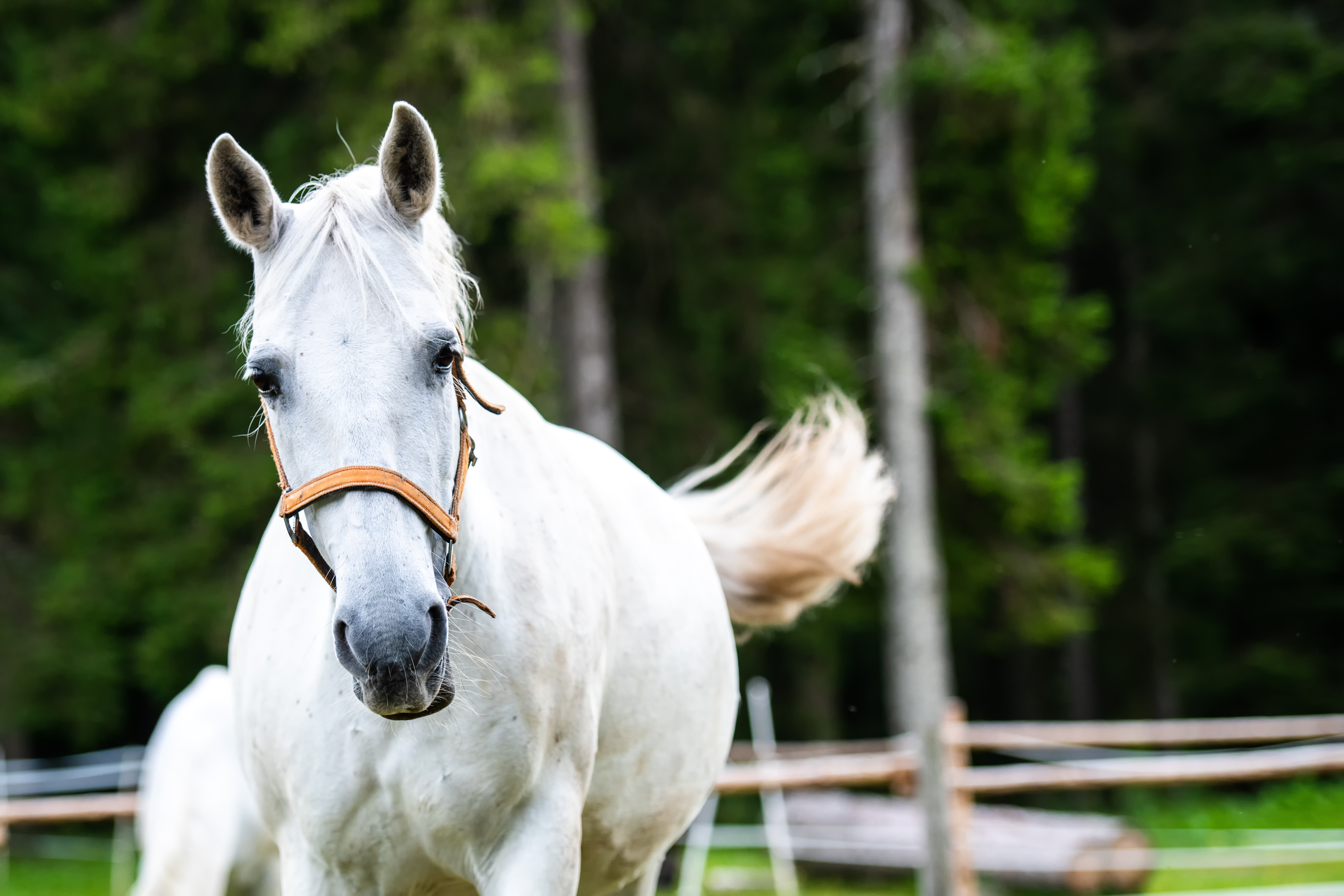
Photo credit | Andrej Safaric
Vienna’s Spanish Riding School: A Living Legacy
The Spanish Riding School stands as a testament to the enduring bond between humans and horses. It preserves centuries-old traditions while remaining relevant in the modern world. As visitors watch the white Lipizzaner stallions perform their intricate dances, they’re not just seeing a show; they’re witnessing a living piece of history.
In a world that often moves too fast, the Spanish Riding School reminds us of the value of patience, dedication, and the pursuit of excellence. It continues to enchant and inspire, ensuring that the art of classical dressage will be preserved for future generations to appreciate and enjoy.
Whether you’re a horse enthusiast, a history buff, or simply someone who appreciates beauty and grace, a visit to the Spanish Riding School is an unforgettable experience. It’s a chance to step back in time and witness a tradition that has stood the test of time, continuing to captivate audiences just as it did centuries ago.
Thank you for Visiting
Thank you for stopping by and I hope you’ve enjoyed pursuing this article! There are plenty more to enjoy — check out the list below!
I am a food and travel writer as well as a cruise ship lecturer: my passion is exploring the cuisine, history, and culture of new places and writing about them here.
I hope you’ll consider staying connected with me by subscribing to my newsletter, Destination Curation, where I look at the intersection of history, culture, and cuisine in major destinations. You can also join the conversation on Facebook, Twitter, Instagram, and Pinterest!
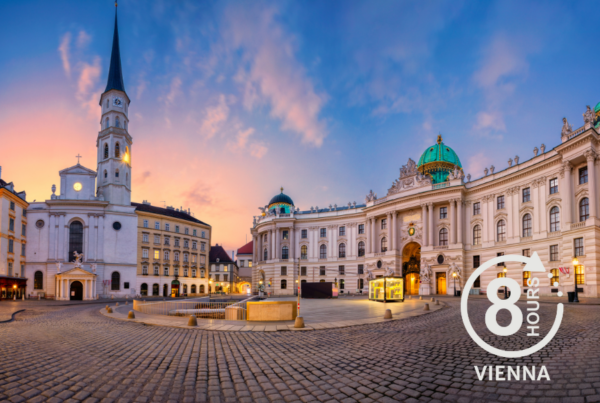 8 Hours in Vienna, Austria: The Best Things to Do
8 Hours in Vienna, Austria: The Best Things to Do
8 Hours in Vienna, Austria: The Best Things to Do
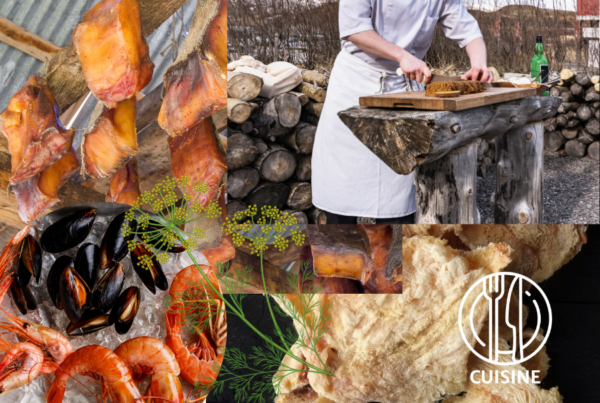 The Must-Try Things to Eat and Drink in Iceland
The Must-Try Things to Eat and Drink in Iceland
The Must-Try Things to Eat and Drink in Iceland
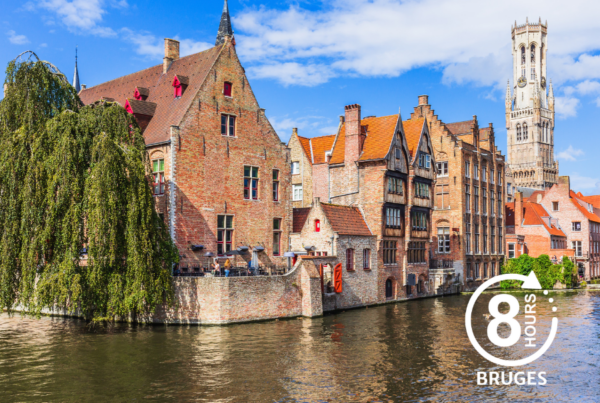 8-Hours in Bruges, Belgium: The Perfect Itinerary
8-Hours in Bruges, Belgium: The Perfect Itinerary
8-Hours in Bruges, Belgium: The Perfect Itinerary
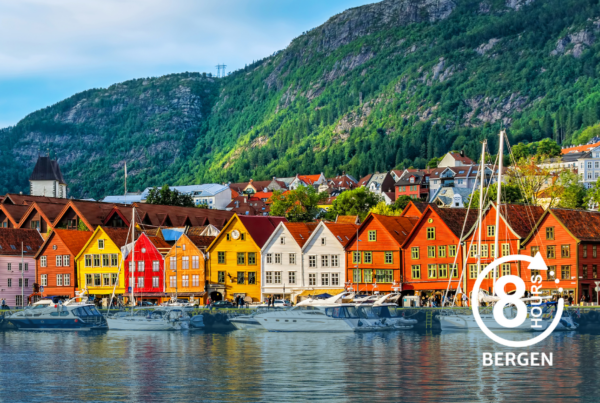 8 Hours in Bergen: A Guide to Norway’s Second City
8 Hours in Bergen: A Guide to Norway’s Second City
8 Hours in Bergen: A Guide to Norway’s Second City
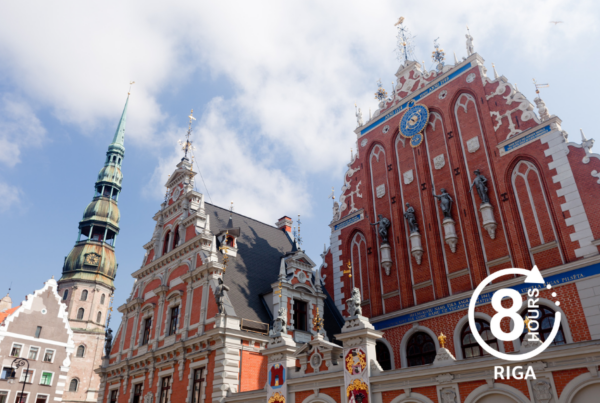 8 Hours in Captivating Riga, The Capital of Latvia
8 Hours in Captivating Riga, The Capital of Latvia
8 Hours in Captivating Riga, The Capital of Latvia
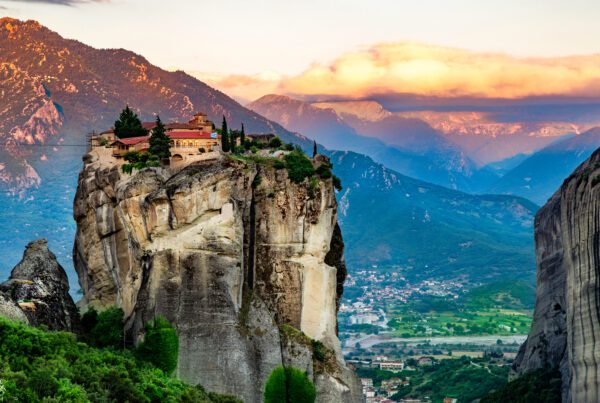 Day Trips from Athens: Meteora, Greece’s Hidden Gem
Day Trips from Athens: Meteora, Greece’s Hidden Gem
Day Trips from Athens: Meteora, Greece’s Hidden Gem
 My Top 10 Travel Planning Tools
My Top 10 Travel Planning Tools
My Top 10 Travel Planning Tools
 7 Steps to a Perfect Travel Bucket List
7 Steps to a Perfect Travel Bucket List
7 Steps to a Perfect Travel Bucket List
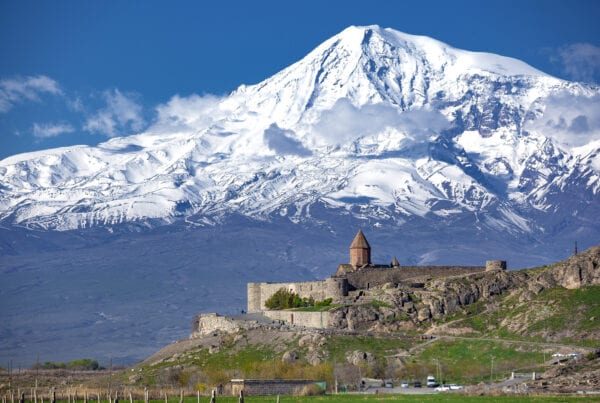 The Mysteries of Mount Ararat
The Mysteries of Mount Ararat
The Mysteries of Mount Ararat
 Budapest’s Iconic Parliament
Budapest’s Iconic Parliament
Budapest’s Iconic Parliament
 Podcast: Moscow Monumental
Podcast: Moscow Monumental
Podcast: Moscow Monumental


